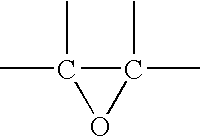Composite paste for dental prostheses
a dental prosthesis and composite paste technology, applied in the field of composite paste for dental prosthesis, can solve the problems of limited time for review, difficult to remove the veneer without damaging, and the inability to do a second trial with a different shade, so as to reduce the amount of polymerization and prolong the working time
- Summary
- Abstract
- Description
- Claims
- Application Information
AI Technical Summary
Benefits of technology
Problems solved by technology
Method used
Image
Examples
example 1
[0057] This example provides an example of a composition of the invention and demonstrates that try-in pastes comprising a reduced initiation system (i.e., an initiation system that is missing an accelerator as compared to the initiation system of the corresponding veneer cement) have an increased working time.
[0058] A resin-based veneer cement and its corresponding try-in paste having the following formulations were prepared:
Component WeightComponent WeightComponentin Veneer Cementin Try-In PasteBarium glass, T-300060.0060.00Fumed silica, US-2025.005.00Bis-GMA18.8819.07Triethyleneglycol15.4515.61dimethacrylateCamphorquinone0.050.05Benzil0.010.01Benzophenone0.180.18Diethylaminoethylacrylate0.350.00Titanium dioxide0.720.72Iron oxide, yellow0.0060.004Iron oxide, red0.0020.002
[0059] The veneer cement and try-in paste formulations were individually mixed until smooth pastes resulted. The pastes were further mixed under reduced pressure to remove air voids. To compar...
example 2
Bond Strength of Veneer Cement / Try-in Paste
[0063] This example provides a composition of the invention. Additionally, this example demonstrates that application and removal of a try-in paste according to the invention does not diminish the bond strength of the veneer cement.
[0064] A resin-based veneer cement and its corresponding try-in paste having the following formulations were prepared:
Component WeightComponent WeightComponentin Veneer Cementin Try-In PasteBarium glass, SP-34564.0064.00Fumed silica, RS-9723.003.00Bis-GMA4.814.81Triethyleneglycol4.814.81dimethacrylateEthoxylated Bis-GMA22.4722.47Camphorquinone0.0660.05Benzophenone0.330.33Ethyldimethylaminobenzoate0.4350.0Titanium dioxide0.060.06Iron oxide, yellow0.0030.003Iron oxide, red0.0010.001
[0065] The veneer cement and try-in paste formulations were individually mixed until smooth pastes resulted. The pastes were further mixed under reduced pressure to remove air voids. Shear bond strength testing was performed accordin...
example 3
Bond Strength after Removing Water-Soluble Try-in Gel
[0068] This example demonstrates that the prior art, water-soluble, try-in gels provide a lesser bond between the tooth and dental prosthesis.
[0069] A resin-based veneer cement and its matching water-soluble try-in gel having the following formulations were prepared:
Component WeightComponent WeightComponentin Veneer Cementin Try-In GelBarium glass, SP-34540.000.0Barium glass, SP-92 120.005.00Fumed silica, OX-503.0020.00Triethyleneglycol7.350.0dimethacrylateEthoxylated Bis-GMA29.400.0Camphorquinone0.0670.0Ethyldimethylaminobenzoate0.0670.8Titanium dioxide0.10.12Iron oxide, yellow0.0080.01Iron oxide, red0.0020.002Water0.08.42Glycerin0.065.65Gelatin0.00.94Sorbic acid0.00.0085
[0070] The veneer cement formulation components were mixed until a smooth paste resulted. The paste was further mixed under reduced pressure to remove air voids. To prepare the try-in gel, water, sorbic acid and 28.5% of the glycerin were heated to 50° C. wit...
PUM
 Login to View More
Login to View More Abstract
Description
Claims
Application Information
 Login to View More
Login to View More - R&D
- Intellectual Property
- Life Sciences
- Materials
- Tech Scout
- Unparalleled Data Quality
- Higher Quality Content
- 60% Fewer Hallucinations
Browse by: Latest US Patents, China's latest patents, Technical Efficacy Thesaurus, Application Domain, Technology Topic, Popular Technical Reports.
© 2025 PatSnap. All rights reserved.Legal|Privacy policy|Modern Slavery Act Transparency Statement|Sitemap|About US| Contact US: help@patsnap.com


